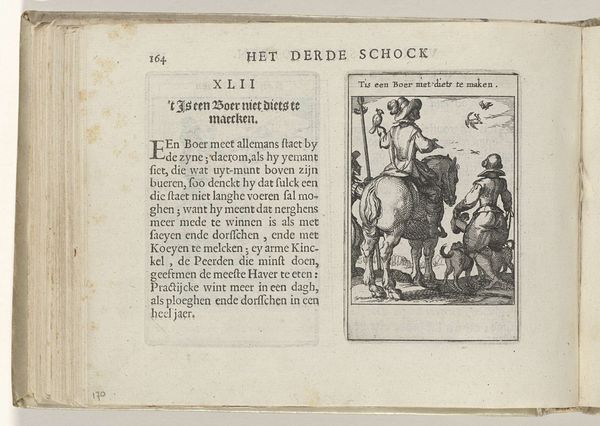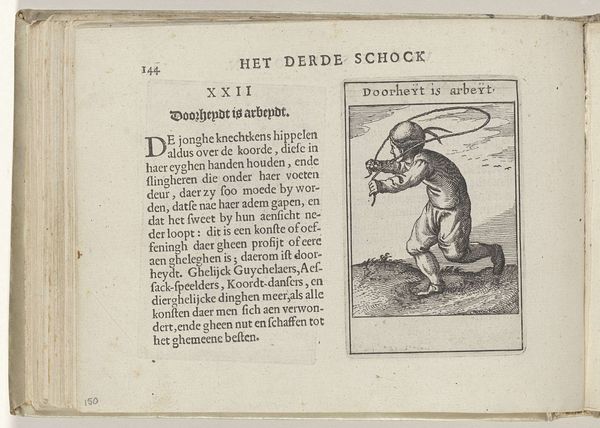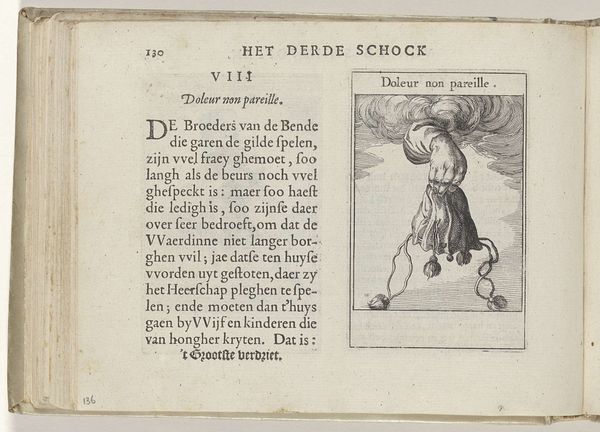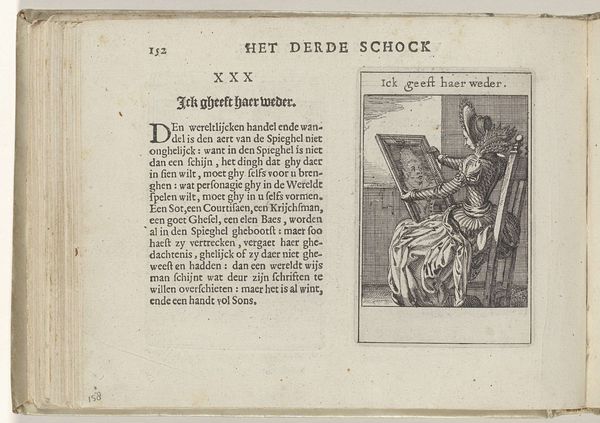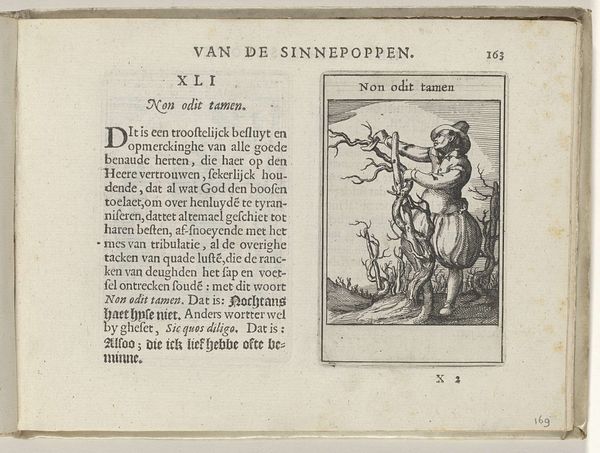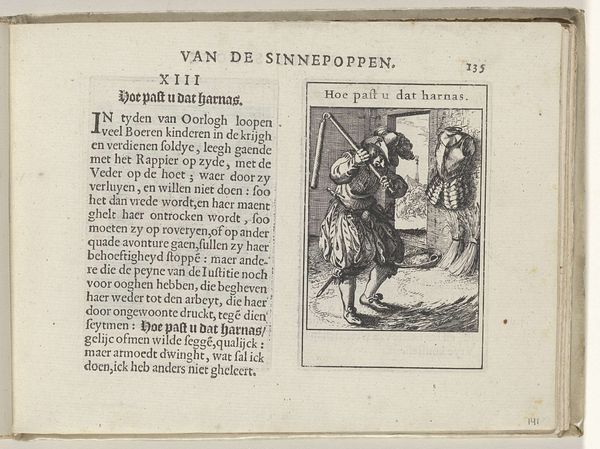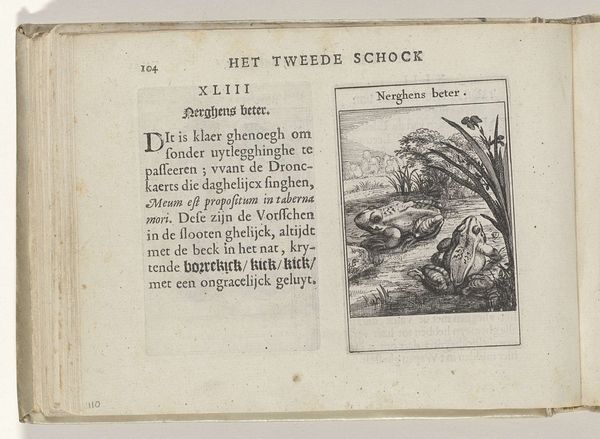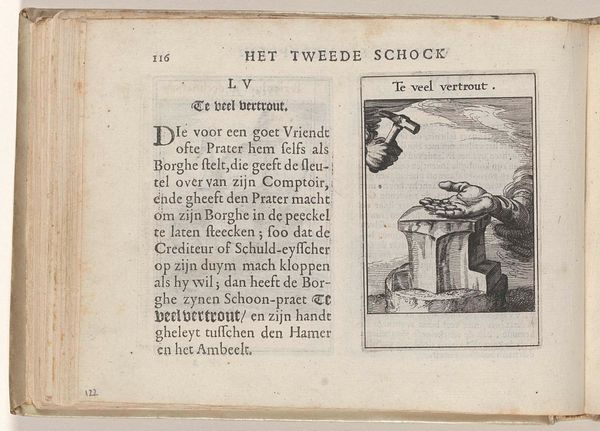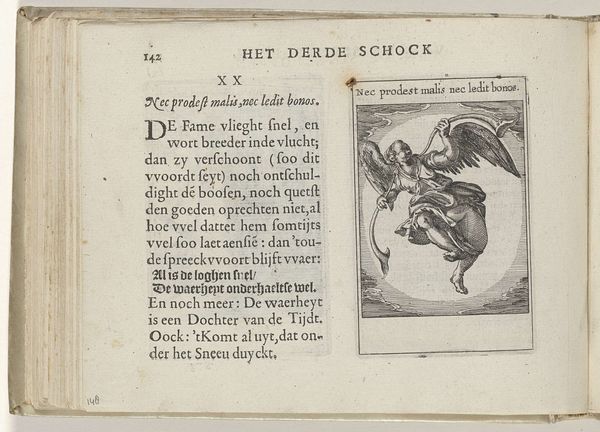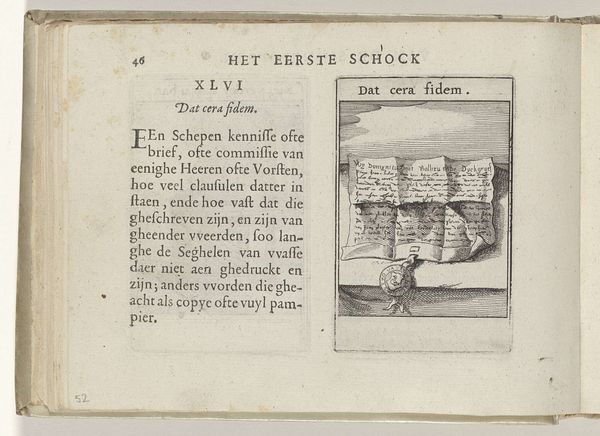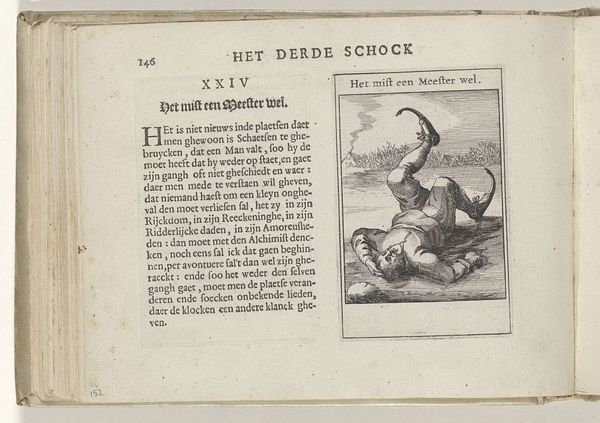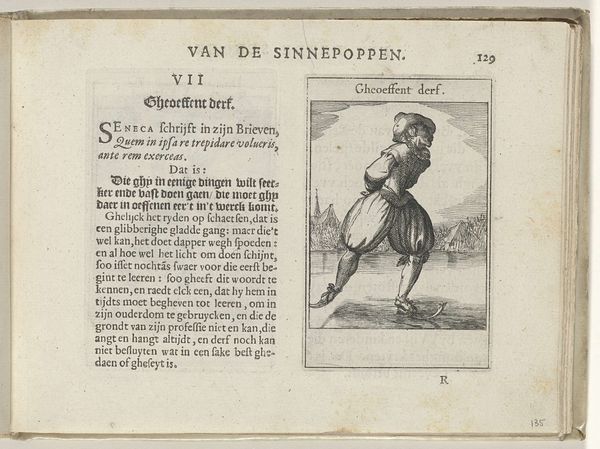
print, engraving
#
dutch-golden-age
# print
#
genre-painting
#
engraving
Dimensions: height 137 mm, width 188 mm, height 95 mm, width 60 mm
Copyright: Rijks Museum: Open Domain
Curator: The etching, "LII Veel Vlagghen, luttel Botters," was crafted in 1614 by Roemer Visscher and resides here at the Rijksmuseum. Isn’t there something rather… theatrical about it? Editor: It has a kind of stage presence, certainly. Those figures strutting through, all that fabric—I read this immediately as an intersection of class and gender. Look at the ostentatious display: the fancy hats and exaggerated clothing signify wealth, but there’s an imbalance here. Curator: Tell me more! Editor: Well, consider the proverb the piece illustrates: "Many flags, few butters," as in, appearances can be deceiving. It suggests that those who flaunt their wealth most conspicuously often have little substance or sustenance. There’s this anxiety, very typical of Dutch Golden Age art, around the performance of identity through material possessions. And who suffers for this performance? Who's omitted from the frame? Probably women. Curator: Yes, yes, I can see how a proverb might speak volumes! There's also this quiet tension that hums in many Golden Age pieces… a constant tug-of-war between societal appearances and an unspoken truth. It’s there in the very deliberate shading—the darker spaces hint at a hidden narrative, maybe? Editor: Absolutely. And the use of print as a medium is so relevant here. Engravings like this made images more accessible, fueling a broader debate about wealth, morality, and the relationship between public image and private reality. They spread quick and could carry this proverb far and wide. Curator: It’s an eternal theme—how much of what we present is genuine? The clothing could tell a whole other story beyond wealth too. Look at those breeches… wonderfully rotund! Almost begging for parody. Editor: And there’s something subtly subversive about it, isn’t there? The figures’ swagger borders on satire. You’re almost compelled to read it as a critique from Visscher, but, then again, perhaps a little mockery of one’s subjects was simply permissible back then. The point, for me, lies in interrogating how these historical images mirror ongoing power struggles in contemporary society. Curator: Power and pretension then, immortalised by ink on paper. Editor: Absolutely. I leave it mulling on the notion of conspicuous consumption – past, present, and persistent.
Comments
No comments
Be the first to comment and join the conversation on the ultimate creative platform.
